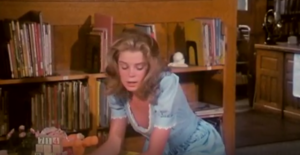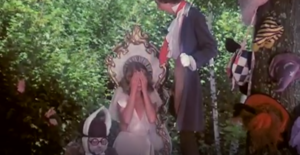The article “The New Woman Fiction” by Dr. Andrzej Diniejko draws a compelling timeline of the challenging and transformation of female gender norms at the tail end of the Victorian era. Diniejko tracks the satirical and parody representations of “New Women”, or in other words, women who were challenging gender norms and embodying a new level of independence and expression. Consistently, “new women” were compared to men, represented as “male-identified, or manhating and/or man-eating or self-appointed saviour of benighted masculinity.” (Richardson and Willis, as quoted in Diniejko)
This came off as very queer to me, as it no doubt was offensive to some women who didn’t identify with masculinity, while also possibly being affirming to people of non-normative gender expressions. This reminded me of a 1925-era song, “Masculine Women! Feminine Men!” another example of mainstream gender parody which has since been reclaimed by queer communities. It’s my aim to briefly illustrate the similarities between the ideas of the “New Woman” of Diniejko’s article and the song text, hopefully illuminating the pervasive fear of masculine women through time.
Diniejko writes that a central tenet to “New Women” philosophy was fashion, and a move towards pants-wearing and bike riding. Many satirical representations included bloomers. In “Masculine Women! Feminine Men!” there is a similar expression of worry about pants challenging the status quo, “Knickers and trousers, baggy and wide/ Nobody knows who’s walking inside” Despite being separated by thirty years, the two eras share a worry about pants fundamentally changing women who wear them, and how pants conceal gender once they’re adopted outside of the traditionally male wearers.
Diniejko also mentions the role of smoking in “New Women” art and literature, a symbol of independence, maturity, and manhood. In “Masculine Women! Feminine Men!” the singer quips, “Auntie is smoking, rolling her own,” similarly positioning smoking as an independent act that becomes threatening when women adopt it.
Finally, more generally, I believe the anxiety around the “New Women” and “Masculine Women” is fueled by the same desire to return to tradition. Diniejko writes there was a strong connection between the “New Woman” philosophy and other cultural revolutions of the time, rejecting the past and imagining a new future. In “Masculine Women! Feminine Men!” the singer laments about the past, “Girls were girls and boys were boys when I was a tot / Now we don’t know who is who or even what’s what” and “Things are not what they used to be, you’ll see.” Without going into too much detail, I believe the cultural revolutions of the 1890s and 1920s were similar in their embrace of extravagance and pushing cultural norms. The worry about tradition being interrupted is evergreen.
So is the “New Woman” new? Or has she always existed? I believe throughout time there is an undercurrent of fear of women pushing gender boundaries and experimenting with masculine expressions. The very same fears of the 1890s “New Woman”, in all her pants-wearing, cigarette smoking, and tradition-interrupting glory, come back in full force in the 1920s.
Bibliography
Monaco, James V, Leslie, Edgar and Hugh J. Ward (Firm). Masculine women! Feminine men! Melbourne: L.F. Collin, 1925. http://nla.gov.au/nla.obj-165802373
Diniejko, Andrzej. “The New Woman Fiction.” The Victorian Web, 17 Dec. 2011, https://victorianweb.org/gender/diniejko1.html.




